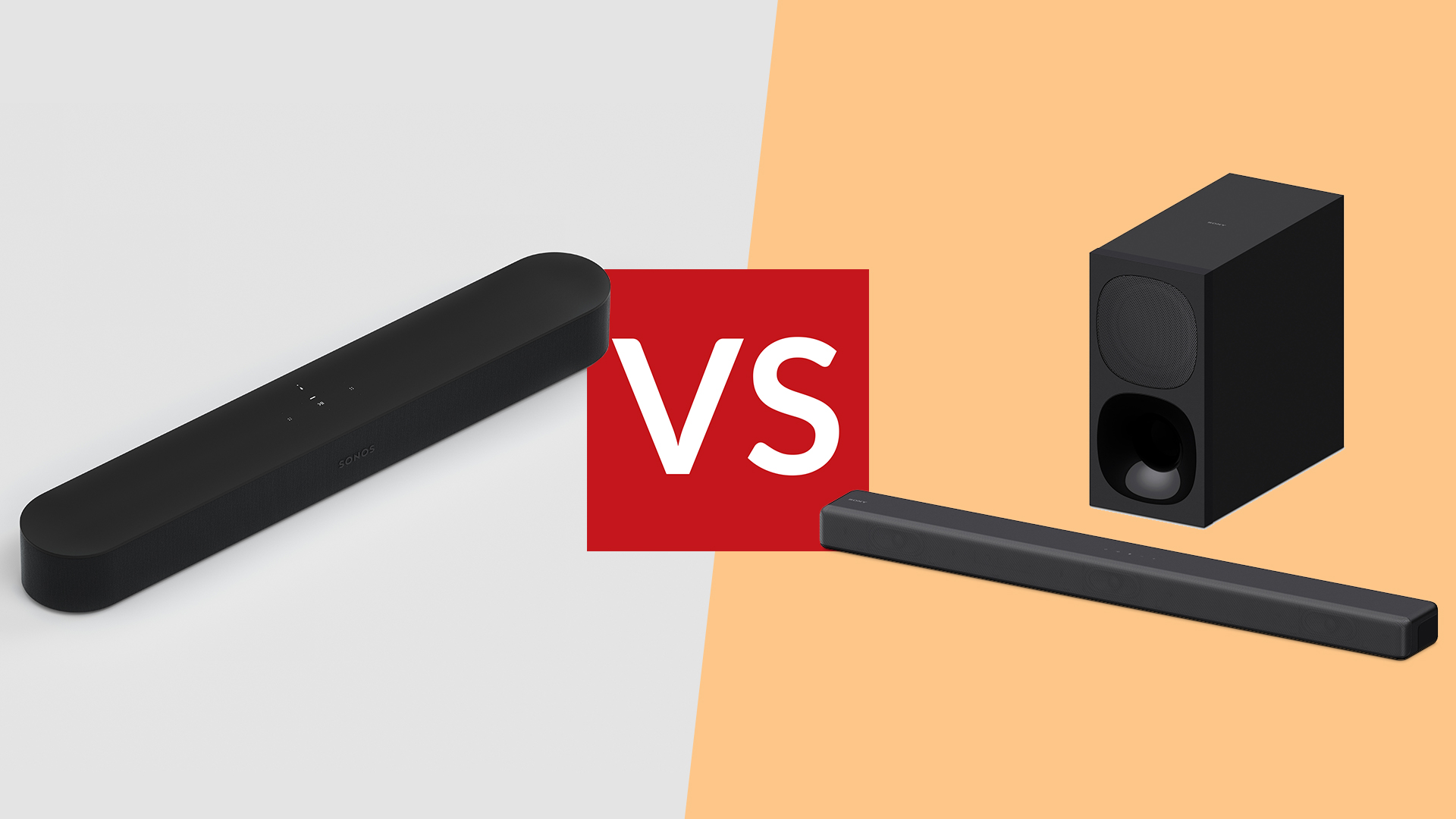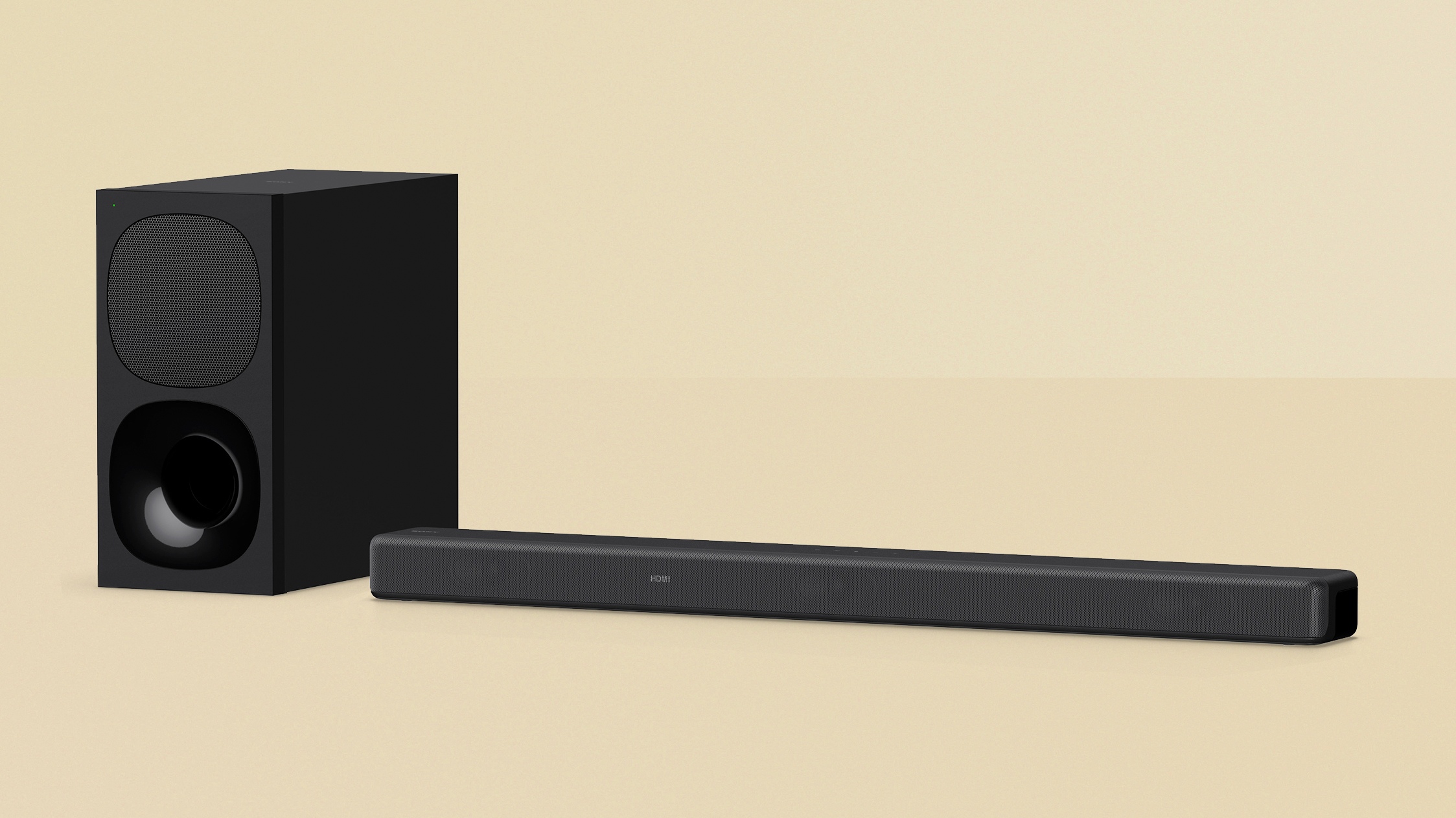
Are you looking for a soundbar that caters to film fanatics or one aimed at music lovers? There are some models that handle both with skill, but most tend to favour one or the other, especially in the more budget-conscious end of the market.
The Sony HT-G700 and Sonos Beam are perfect examples, with the former engineered to immerse you in movie soundtracks, while the latter is designed to play all your favourite songs just a strongly as it adds clarity to your TV viewing. There's also the Sonos Beam 2nd Gen now available too, adding Dolby Atmos smarts to the picture.
Either is a good addition to the best TVs, and they're similarly priced, but there are some differences here beyond just the audio focus, so let's compare them to work out which best matches what you want from a soundbar.
Sony HT-G700 vs Sonos Beam: Price & features
In the UK, there's no real difference in the cost here, with both soundbars officially priced at £399 – although you can get them for less if you shop around. However, in the US, the difference is pretty significant: the HT-G700 costs $599, while the Sonos Beam is just $399. And in Australia, this swing the other way – the HT-G700 is just AU$535 compared to AU$599 for the Sonos Beam. So keep in mind that what we talk about here will balance differently depending on which country you're in…
The Sony HT-G700 is a feature-packed cinema-in-a-box boasting a 3.1-channel system with separate wireless subwoofer. There’s HDMI input and outputs that pass 4K and high dynamic range (HDR10, HLG and Dolby Vision) through, while the output also includes eARC. There’s support for Dolby Atmos and DTS:X, along with a decent remote, an optical audio input, and Bluetooth.
The Sonos Beam sports a 2.1-channel speaker layout but no separate subwoofer. There’s also no remote, just the Sonos app, but there is built-in Amazon Alexa and Google Assistant, so it's a smart speaker too. There’s a single HDMI-ARC connection, along with an Ethernet port, plus there’s built-in Wi-Fi and Apple AirPlay 2, but no Bluetooth support.
Sony HT-G700 vs Sonos Beam: Design & setup

The Sonos Beam has a smart, simple look.
The Sony HT-G700 measures in at 980x64x108mm (38.6x2.5x4.3 inches), making it a good match for TVs up to 55 inches, while its sleek design shouldn’t block your view. The bar is finished in black, with a punched metal speaker grille at the front, a small display on the left, and touch sensitive controls on the top. The forward-firing sub retains a similar finish and aesthetic.
Get all the latest news, reviews, deals and buying guides on gorgeous tech, home and active products from the T3 experts
The Sonos Beam sports a minimalist design, with the emphasis on discretion and a choice of black or white finishes. A fabric grille covers the front and sides, and there are touch sensitive controls on the top. The Beam measures 651x69x100mm (25.6x2.7x3.9), making it better suited to smaller screen sizes, and allowing it to sit under your TV without drawing attention to itself.
The HT-G700 is simple to install, just connect it to your TV via HDMI – although if your TV doesn’t support ARC, you can use the optical connection instead. The only wireless option is Bluetooth, enabling you to stream music from other devices. The included remote control is excellent, and helps make navigating the comprehensive setup menu easy and intuitive.
The Beam is installed via the Sonos app, which takes you through establishing a Wi-Fi connection, creating a multi-room system and setting up Alexa and Google. The app doubles as the remote, but you can use also your TV remote to control the volume, or the smart assistants. If your TV supports HDMI-ARC you can use the provided cable, but if not you’ll need the included optical audio adapter. Bear in mind because the Sonos Beam has only one HDMI port, you'll effectively lose one port from your TV by plugging this in.
Sony HT-G700 vs Sonos Beam: Sound quality

The Sony HT-G700 uses clever acoustic processing to expand its soundstage way beyond its size.
The Sony HT-G700’s 3.1-channel system is based around three forward-firing speakers and a wireless subwoofer. The advantage of this approach is the dedicated centre speaker for dialogue, and a separate bass driver for plenty of low-end slam. The addition of some decent Class D amplification ensures this combo produces a powerful and expansive soundstage.
The inclusion of Dolby Atmos and DTS:X makes this soundbar a great choice for film fans, and uses Sony’s Vertical surround engine to create the illusion of enhanced depth and height. The result is a more immersive experience with movie soundtracks and streaming services such as Netflix and Disney+ – the 3D surround effects are far more effective than they have any right to be considering the size and price here. There’s also a Music mode, but frankly it's not up to much – it’s with movies that the G700 really gets to strut its stuff.
The Sonos Beam takes a more basic approach, with its two forward-firing speakers better suited to music. These are composed of four full-range woofers and a tweeter, each of which has its own Class D amplification. Three passive radiators add some bass extension (enough to make the sound feel balanced, but you're definitely missing some depth without a proper subwoofer), and the resulting soundstage is surprisingly big, with impressive stereo imaging that’s ideal for music lovers.
The Beam can also sound excellent with TV shows, movies and games, but lacks the immersion of the Sony. Sonos offers optional wireless rear speakers and a wireless subwoofer, thus creating a 4.1-channel system, but this approach starts to get pricey. Unlike the G700, there’s no dedicated centre channel speaker, but the Beam still handles dialogue with clarity and focus.
Sony HT-G700 vs Sonos Beam: Verdict
In the UK, where the pricing is virtually the same, the choice between the Sony HT-G700 and Sonos Beam largely comes down to preference. If you’re interested in music just as much as watching TV, then the latter is a great choice, especially if you’ve already invested in the Sonos multi-room ecosystem or Apple AirPlay 2 speakers. But if movies are your focus, the Sony HT-G700 gets more out of the latest blockbuster or streaming show by delivering an immersive experience from object-based audio soundtracks like Dolby Atmos and DTS:X, while its separate subwoofer produces deep bass you can feel.
You should also bear in mind about the HDMI passthrough factor – if you have a TV with limited ports (which includes many of the best TVs under £1000, best TVs under $1000 or best TVs under £500) that you can't afford to lose, the fact that you can plug something into the Sony to pass through its video is a major benefit.
In Australia, we'd say the it's a similar question to the UK – the prices are close enough to say that you should choose whichever best matches your preferences. In the US, the Sony is more of a stretch to recommend as strongly – the Sonos Beam definitely gives more bang for buck. But the HT-G700 is still a strong performer with some useful extra features, so you might well decide it's worth the $200.

Steve Withers is a professional calibrator and freelance journalist who regularly contributes to T3, reviewing audio and video products, and writing articles. Steve has been writing about audio and video products for over ten years and, along with T3, he also contributes to TechRadar, Trusted Reviews, Expert Reviews, AVForums, Pocket-lint, Home Cinema Choice, and Wired. Steve is Level 2 certified with THX, the Imaging Science Foundation (ISF) and the Home Acoustics Alliance (HAA). As such, he remains abreast of all AV technology developments and the latest industry standards as we transition into a new era in home video and audio.
